When we hear the "lightning war", before our eyes we see the armored units of the Wehrmacht led by General Heinz Guderian. Meanwhile, four hundred years before the "fast Heinz" drove his tanks into the borders of the USSR, Muscovites trembled at a different blitz. Its author was a Lithuanian - Krzysztof Radziwiłł.
One day in August 1581, Ivan IV was resting in Staritsa, a city on the banks of the Volga River. Suddenly, the peace of the canicle was broken by the report of the appearance of Polish-Lithuanian banners in the area. The hosudar, speechless with terror (deliberately denying him the title of tsar, he was also not recognized in former Poland), looked from the city walls at the burning villages and chutory.
Apparently he fell into a rage out of fear and helplessness. He had only 700 shooters at hand. There was little he could do with such a handful of people. He watched passively as the Polish cavalry banners destroy and burn the country, and he was already thinking about running away . At this point, the Moscow ruler had a good chance to go to Poland in chains .
Scheduled suicide
The perpetrator of the panic was the Lithuanian field hetman himself. Prince Krzysztof Radziwiłł was born in 1547 as the son of Mikołaj Radziwiłł called the Red. His aunt was Barbara herself, the Polish queen of the Radziwiłł family.
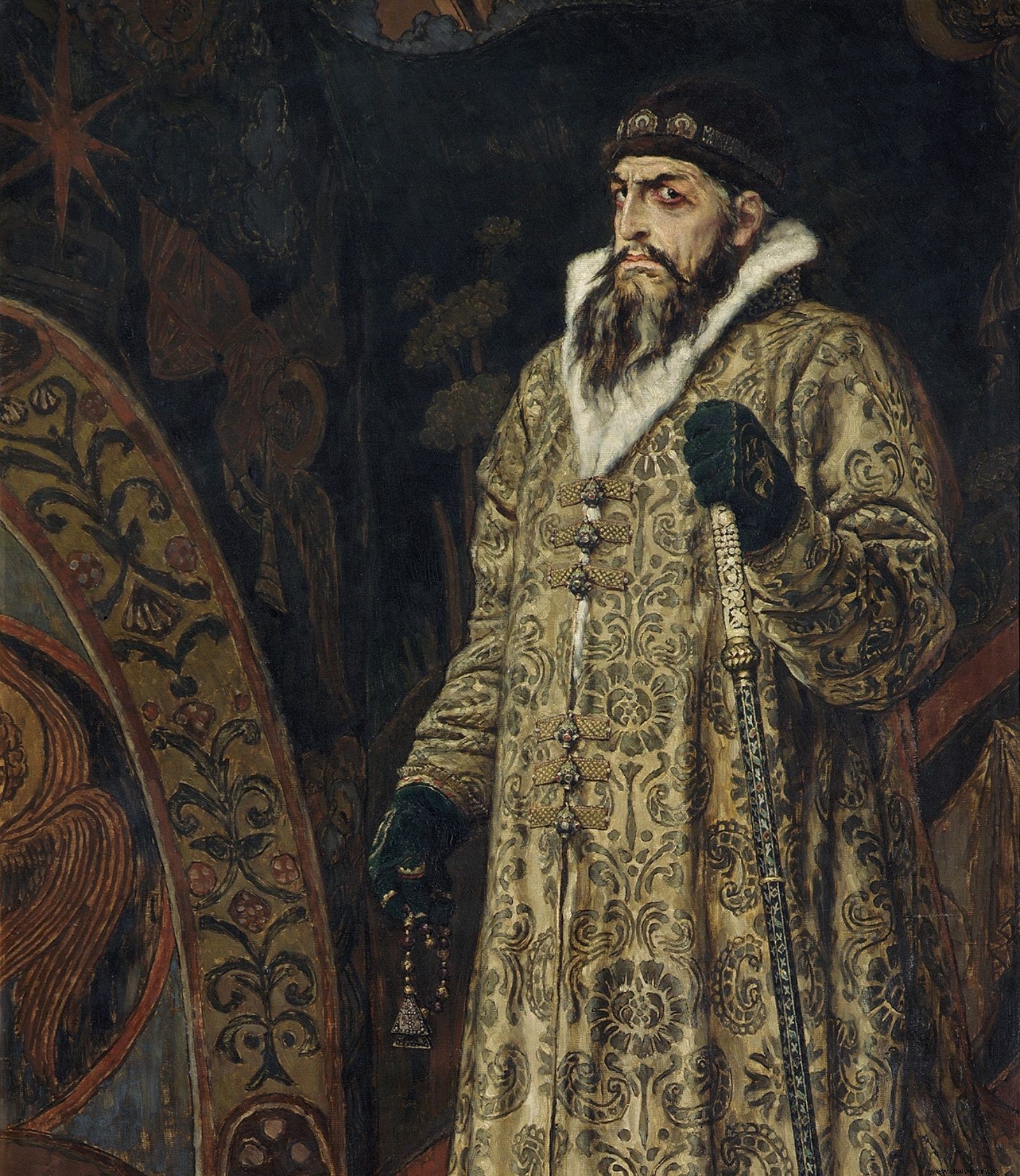
Ivan IV known as the Terrible. Maybe he was dangerous, but he had a lot of trouble when he found out about the presence of Radziwiłł's army.
Krzysztof "tasted" Muscovites for the first time in 1564, when he was only seventeen. After another seventeen, he was an experienced tactician with a developed method of warfare. He knew the opponent's way of fighting, his strengths and weaknesses. He knew what he could afford.
The year was 1581. The Commonwealth had been at war with Russia for over five years and it was not expected to be resolved. Blitz was a joint idea of Radziwiłł and King Stefan Batory. While the Polish-Lithuanian forces will start the siege of Pskov, a large cavalry unit will perform a special task. It will ravage hostile lands and prevent the concentration of enemy troops.
The decision to venture deep into the enemy's vast territory was tempting, and at the same time had all the hallmarks of a suicide trip . And yet Radziwiłł decided to take the risk.
The march took place on August 5, so before the main part of the Pskov campaign, which was to force Ivan the Terrible to make peace. The king hoped that Radziwiłł would be able to cast a terror on the enemy .
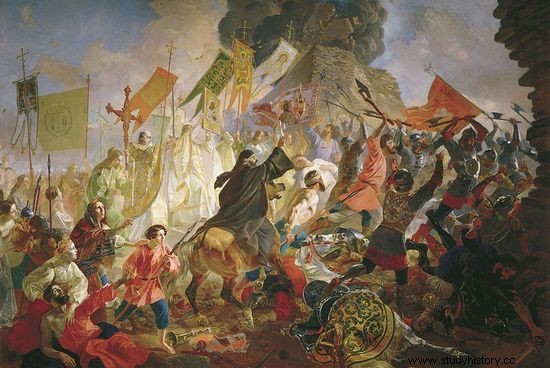
Stefan Batory sent a unit of Radziwiłł to make as much trouble as possible in the enemy's rear. Meanwhile, he was getting ready to go to Pskov. Above, there is a painting by Karl Bryullov, "The Battle of Pskov".
A unit of 6,000 horses traveled east by commuter communication through a wild country full of forests and swamps. On the way, the soldiers of Radziwiłł passed the city of Toropiec, which remembers last year's victory of the Commonwealth's troops over twice the number of excellent Russian cavalry. Was history going to repeat itself this time?
The great battle that never happened
Crossing the River Sheelonia, a small detachment of Moscow cavalry was encountered. 700 light cavalry hit the opponent. But - as reported by Reinhold Heidenstein, the royal secretary and author of the chronicle:
about 200 of them were overwhelmed with enthusiasm, rushed without orders to the enemy guards and were lured to the bridges where the enemy had planted shooters and lost some of their own.
Only the rescue of 500 riders saved the outcome of the battle. The shattered enemy was driven for three miles. After the battle, several prisoners stood before Krzysztof Radziwiłł.
From them it was learned that a strong enemy corps was stationed in the vicinity of Rzhev on the Volga, supposedly numbering as many as 15,000 people. It was a tasty morsel for Radziwiłł. Despite the overwhelming advantage of his opponent, he decided to strike . He trusted in the training of his people and his own tactical sense. The Muscovites probably did not doubt the Hetman's skills, since they escaped from the battle.
Burn, rob and rape, or strategic actions
In the face of the enemy's passive attitude, Prince Radziwiłł dispersed his people in three columns, each giving the order to plunder, that is to say elegantly:to destroy the enemy's strategic base. It was then that one of the fields reached the vicinity of Staritsa, and Ivan IV could see with his own eyes the efficiency of the Commonwealth's driving.
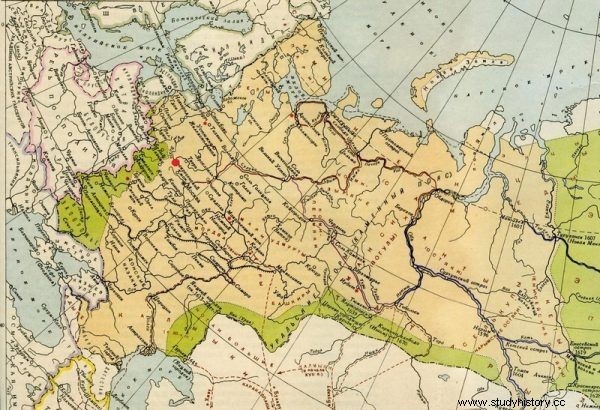
Staritsa marked with a red dot on the map of Russia showing the country at the beginning of the 17th century.
The appearance of the cavalry at Starica was the turning point of the entire expedition. Radziwiłł weighed the decision:hit the city or withdraw. Filon Kmita, the Smolensk voivode commanding part of the units, advised to attack, but Radziwiłł hesitated. Finally, in the Hetman's camp, a fugitive from Starica, a stool of Ivan IV, a certain Daniel Murza, appeared. Stolnik was eager to talk about the power surrounding the Muscovite prince, and his novels, his well-established fame of the prince's power, gave him faith .
In view of this - as it was to turn out - false information, as well as for technical reasons (the cavalry was not suitable for conquering castles), Radziwiłł did not obey Filon Kmita's persuasion. Fearing failure, he stepped back. Daniel's talkative and Radziwiłł's fears saved Ivan from captivity.
Problems concentrating
Radziwiłł roamed around Ivan's estate for two more months. He burned, robbed and endured individual Moscow cavalry flags in numerous skirmishes, which disturbed their concentration.
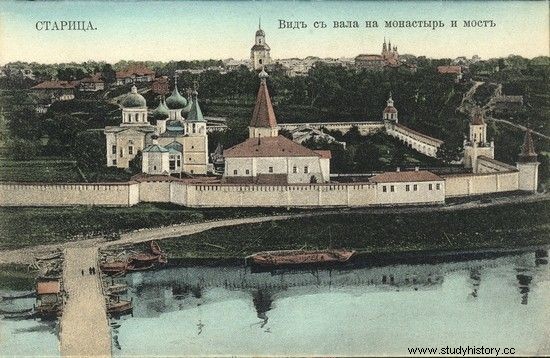
Starica. It was as far as this city on the Volga region that Krzysztof Radziwiłł set out with his riders.
This bloody trail reached Old Russa. The town was occupied by the Moscow cavalry presidium, which guarded the transit of war materials from Novgorod to Pskov, already besieged by Batory. The governor of Oboleński was in charge of the presidium.
Muscovites actively participated in the border struggle. They beat the Cossack cavalry of the Commonwealth, then let it beat them again. Thus, such a war did not bring about a resolution. Radziwiłł, knowing about the activity of the enemy, stood near Old Russa. In the words of Heidenstein: the enemy was already terrified by the news of our army approaching, at the mere sight of our flee; Obolensky and several other boyar sons are taken prisoner .
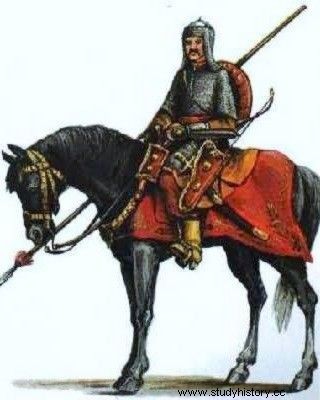
A companion of Lithuanian light driving. It was they who made Ivan the Terrible fear.
It was the last victory for the blitz. On October 22, Radziwiłł stood near Pskov in the royal camp, greeted loudly by the nobility and soldiers tired of the long and hopeless siege.
Piorun and Persians
Zagon walked 1,400 kilometers in wooded or swampy terrain along roads of mediocre category, which was an impressive feat.
Since the fame of the raid was quite loud and the eyewitness stories were astonishing, the nobility unanimously concluded that the hetman led his men to the edge of the world, supposedly Persia itself, hence they were called Persians . And Krzysztof Radziwiłł was nicknamed Piorun.
The truth, however, was more down-to-earth, although it does not diminish Piorun's glory. Zagon achieved his goal - he shielded the army of King Stefan I marching on Psków. He destroyed the Moscow troops before they had time to combine into a considerable force and move to the relief of the besieged city. This helped to maintain the difficult siege and, as a result, forced Ivan to find favorable conditions for peace in Jam Zapolski.
Finally, Piorun scared the Muscovites, and the knights of the Commonwealth gained respect. However, Prince Radziwiłł could not win the war for the Republic of Poland. The backbone of the Moscow state was not broken. Maybe if Ivan IV were captured…
The result of the campaign of 1581 was therefore weighed at Pskov. But that's another story.
Editor:Krzysztof Chaba; Photo edition:Rafał Kuzak
